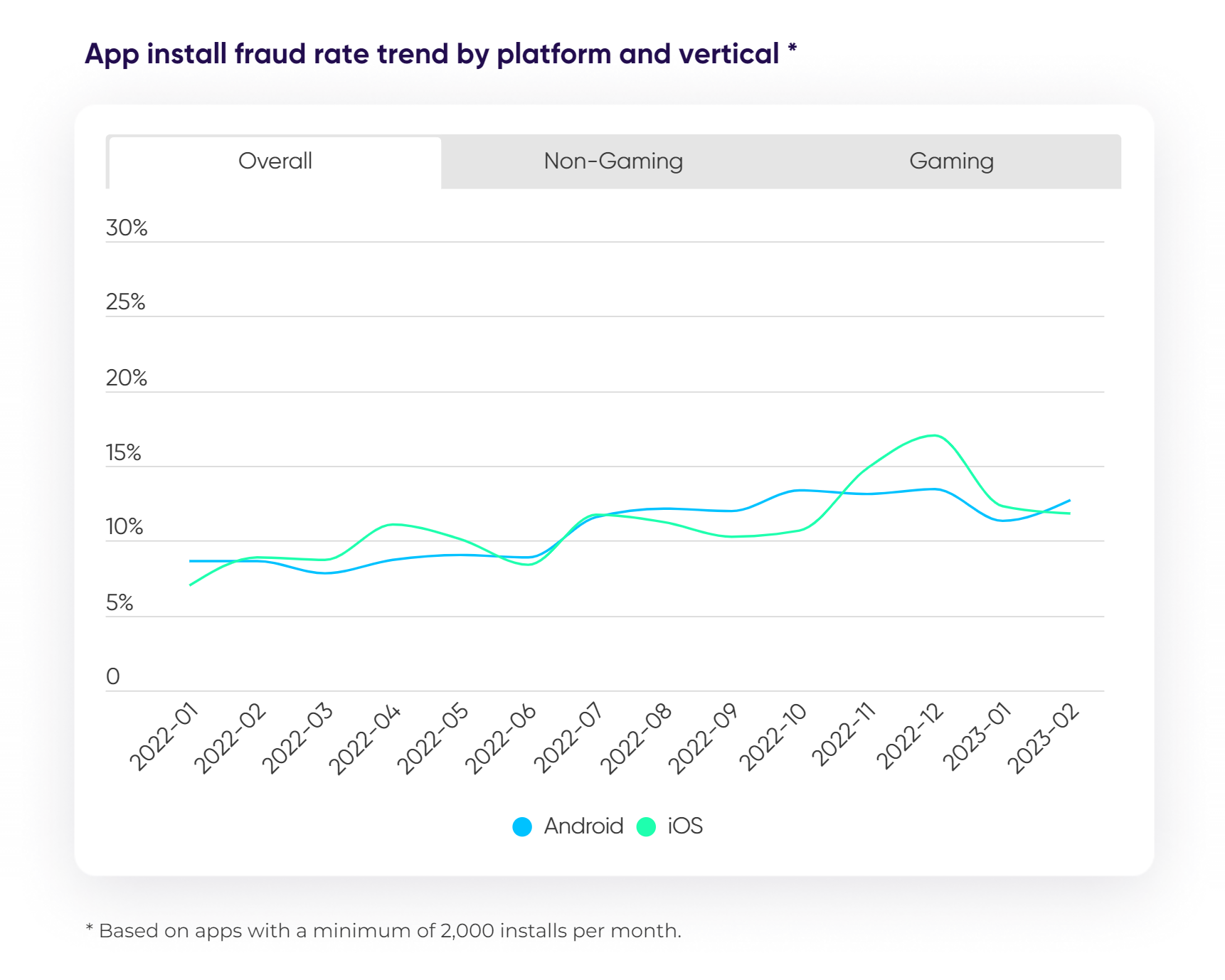The landscape of digital advertising has often faced a singular foe in ad fraud which often leads to billions of dollars in losses on an annual basis. Considerable efforts have been put into trying to reduce the number of fraudulent ads that are out there, but in spite of the fact that this is the case, these frauds are somehow still managing to grow their numbers. Some headway was made over the past few years, but it turns out that ad fraud made an enormous comeback in 2022.
With all of that having been said and now out of the way, it is important to note that ad fraud increased by over 40% in 2022 as compared to 2021. These numbers are for the iOS App Store, with ad fraud increasing by an estimated 46% on the Google Play Store. Due to the rise in ad fraud, the industry lost around $5.4 billion within the span of a single year, and that might make it more challenging for marketers to stay afloat than might have been the case otherwise.
It should also be mentioned that around 70% of all fraud can be directly attributed to bots with all things having been considered and taken into account. Click flooding comes in second, followed by fake publisher activity. Install hijacking is also a particularly prevalent method of ad fraud in the Middle East, although it still pales in comparison to bot based fraud as well as click flooding.
The industry that was worst hit by these frauds was the finance app market, with an estimated $2.6 billion in losses being recorded in 2022 alone. This accounts for around half of the fraud related losses for the previous year, and it will be interesting to see if this problem gets even worse during 2023.
The only segment of the digital app industry that seemed relatively safe from fraud was that of gaming apps. They usually have protections in place because of the fact that this is the sort of thing that could potentially end up securing their gaming audience from the startling prevalence of fraud.
H/T: Appsflyer / The state of mobile app fraud – 2023 edition
Read next: Top Red Flags For Freelancers And Clients In The Outsourcing World
With all of that having been said and now out of the way, it is important to note that ad fraud increased by over 40% in 2022 as compared to 2021. These numbers are for the iOS App Store, with ad fraud increasing by an estimated 46% on the Google Play Store. Due to the rise in ad fraud, the industry lost around $5.4 billion within the span of a single year, and that might make it more challenging for marketers to stay afloat than might have been the case otherwise.
It should also be mentioned that around 70% of all fraud can be directly attributed to bots with all things having been considered and taken into account. Click flooding comes in second, followed by fake publisher activity. Install hijacking is also a particularly prevalent method of ad fraud in the Middle East, although it still pales in comparison to bot based fraud as well as click flooding.
The industry that was worst hit by these frauds was the finance app market, with an estimated $2.6 billion in losses being recorded in 2022 alone. This accounts for around half of the fraud related losses for the previous year, and it will be interesting to see if this problem gets even worse during 2023.
The only segment of the digital app industry that seemed relatively safe from fraud was that of gaming apps. They usually have protections in place because of the fact that this is the sort of thing that could potentially end up securing their gaming audience from the startling prevalence of fraud.
H/T: Appsflyer / The state of mobile app fraud – 2023 edition
Read next: Top Red Flags For Freelancers And Clients In The Outsourcing World



